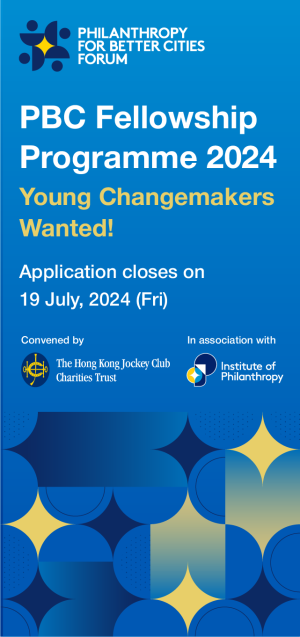Imagine being charged with critical life-changing responsibilities while being starved by the same public actors to whom you are accountable. This is the crazy-making situation nonprofits are finding themselves in, whether they are housing the unhoused, providing safe spaces for women fleeing intimate partner violence, or providing childcare, many of society’s most critical services rely on timely, predictable funding from government agencies. The problem is that payments for contracted services have become anything but reliable for too many organisations.
For too long, nonprofits’ business needs have been woefully misunderstood and undervalued, and the bill is now coming due.
Not-for-profit operations face the same financial challenges as their for-profit counterparts — managing cash flow, planning payroll, and navigating financing relationships. However, the segment of the nonprofit sector that carries out necessary services funded by the public sector faces unique challenges.
Public contracts come with immense upfront costs of delivering services, and oft-delayed payments are gumming up the underlying financial machinery for many service providers. As my friend John MacIntosh wrote in City & State last year, ‘Nonprofit vendors regularly complain that the procurement system is complex, antiquated and creates lengthy payment delays that are costly, sometimes even fatal, to organizations waiting for their money.’
The fundamental problem for nonprofits is that without reliable access to capital and credit, something as basic as delayed contract payments can pose an existential risk. To be clear, committed officials at every level of government are delivering important reforms to the public contracting process. Bureaucratic reform, however, is slow. In the meantime, foundations, which provide grants and help nonprofits build capacity in myriad ways, can and must develop creative new ways to support nonprofits and rally the support of committed philanthropists.
Increasingly imaginative philanthropists and foundations are developing creative solutions to help nonprofits navigate unreliable cash flow, providing a model for others to follow. In a piece for Barron’s Penta, Abby Schulz wrote about philanthropists like Laurie Michaels, who began offering bridge loans during the Covid crisis as organizations found their financial plans turned upside down. As with many social modifications induced by the pandemic, this trend has become a familiar part of post-pandemic life for many nonprofits. Funds that provide short-term bridge loans and other creative financing products are becoming standard financial tools nonprofits can use as an operating lifeline or to drive organizational growth.
‘If foundations can begin thinking about using their capital to help nonprofits survive existential threats, it may open the door to creative uses of capital to actually help nonprofits thrive and escape the scarcity mindset.’
Some resources do exist. For example, the Fund for the City of New York (FCNY) offers zero percent interest loans, providing a vital bridge for specific city contracts. However, the scale of financial challenges faced by nonprofits is so significant that, despite the availability of loans from FCNY, some organizations must seek additional support from private sources to sustain their operations.
A prime example is Brooklyn Defender Services (BDS), a public defender service for individuals unable to afford legal representation. With a substantial budget exceeding $80 million, primarily sourced from public funding, BDS has navigated through fiscal challenges with a $2.8 million loan from FCNY and a separate, interest-bearing $4 million loan from FJC. This financial strategy is critical for BDS to maintain its operations through the fiscal year, highlighting the acute cash flow pressures faced by nonprofits, even those with substantial budgets and significant impact in their communities.
However, even when some parts of the payment system improve, operators are still struggling with a bureaucracy that needs reform. For example, New York City recently announced a nine percent cost-of-living increase in its payments to social services organizations – a major win for the sector’s employees, delivered by a decade of consistent, organized advocacy from thousands of human service workers.
However since every dollar of this increase in funding is essentially matched by an increase in spending on staff salaries, the organizations themselves will not be made better off financially. And since public contracts do not consider interest on debt to be eligible program expenses, nonprofits who take loans to cover government payment delays must continue to cannibalize scarce private fundraising dollars to pay these interest costs.
Finding financing for nonprofit operations is not just a matter of money; it requires senior management’s time, focus, and attention. In conversations with prospective borrowers, the stress on management is palpable. Stopgap funding empowers leadership to focus on strategic decision-making and improving operations.
This year, Sandy Wheeler, a donor to my foundation, FJC, worked with us to renew a line of credit we arranged for one of her favorite nonprofits, Brighter Tomorrows, which provides services to families experiencing domestic violence. This was capitalized by funds in her donor-advised fund (DAF), essentially using her philanthropic account at FJC as a zero percent-interest revolving line of credit to help Brighter Tomorrows manage cash flow for state grant receivables.
It isn’t just boutique foundations providing this support. Inspiring Minds, a nonprofit that offers enriching afterschool programs, confronted egregious delays in public payments. Chalkbeat chronicled how its Executive Director, Katrena Perou, took action. She secured funding to keep the doors open and the lights on by turning to a a bridge loan. While that helped, Perou points out that it isn’t just the slow payment system that causes problems – a grant her organization received a year after it applied ended after just one fiscal year.
Such circumstances force practitioners to operate with a perpetual scarcity mindset, committing enormous amounts of time, energy, and, yes, money to track down the next dollar. Imagine if that energy was instead used constructively to focus on building dynamic new programs, improving operations, and better-serving clients.
If foundations can begin thinking about using their capital to help nonprofits survive existential threats, it may open the door to creative uses of capital to actually help nonprofits thrive and escape the scarcity mindset. Foundations can begin to consider investments in nonprofits that bolster their balance sheets for the long term, not just provide grants or loans to help them make it through the year.
We recently helped a private foundation set up a DAF account as a low-cost revolving line of credit for a vibrant nonprofit that serves LGBTQ youth. But that organization has bold, ambitious plans, not just to use capital to help them manage cash flow, but to help them put down roots in NYC, owning their real estate instead of paying rent to commercial landlords. They view this philanthropic debt instrument as the cornerstone of a larger fundraising campaign to raise philanthropic ‘equity’—the type of investments that will help the organization build its capacity for decades.
This is precisely the kind of innovative thinking that foundations should bring to the table when working with nonprofits.
By acting and thinking entrepreneurially, foundations and the funders they work with can develop a new landscape of financial products and lending options to provide proper stability and support to nonprofits. To fix our social service providers’ challenges, we need everyone—donors of every stripe, foundations, and nonprofit leaders—to join in this critical work.
Sam Marks currently serves as CEO of FJC—A Foundation of Philanthropic Funds (FJC), which maximizes the impact of charitable dollars in over a thousand donor accounts, deploying them as grants and impact investments.





Comments (0)
That's a wonderful helping of data. The fact that you just shared this knowledge with us is very much appreciated. Please continue informing us in this manner. It's quite helpful to have this information.
Many of our Papa's games can now be played without flash. They are some of the most exciting management games you can find anywhere.